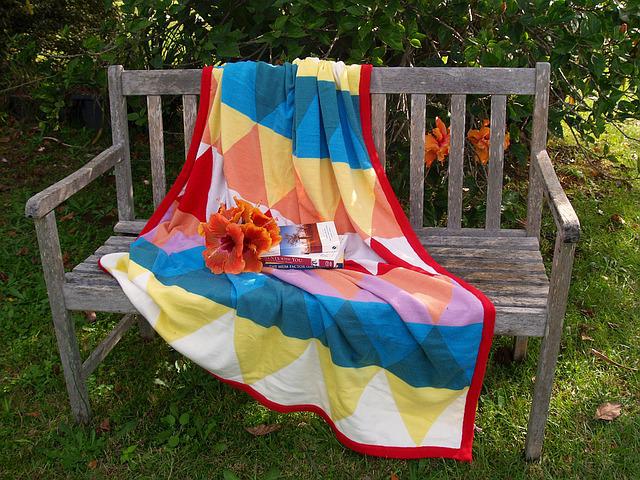How to clean an outdoor rug? People use some typical household items, such as dishwashing soap, white vinegar, and baking soda to clean outdoor carpets that have mold, dirt, stains, and general dirt. While fine baking soda granules will eventually gather and clog the vacuum cleaner, dishwashing soap and white vinegar might not be sufficient to bring back the carpet’s original color. While soda water is another widely used option for removing acidic stains like those left behind by red wine or tomato sauce, it is less effective at removing greasy or sticky stains from the ground.
Table of Contents
Getting The Debris Off
Grab your rug and vigorously shake it. The amount of debris that comes flying off your rug will surprise you. Often, doing this with a partner is simpler. As soon as the rug is free of debris, one person stands on each side of it and shakes it.
If your rug is too big to move by yourself, try hanging it from a railing, banister, or even a step ladder. At this point, strike the rug with a stick, tennis racket, or other objects.
Lifting Stains With Household Cleaners
Keep in mind that while scrubbing removes dirt, you should never scrub stains. It merely drives dirt farther into your rug. Blot rug stains gently from the outside in. There are several miracle removers that can be useful that you probably already have.
Since salt is so absorbent, it works well for stains. Additionally, it eliminates fleas, making it advantageous for pet owners. Before blotting, sprinkle it over the stain. After that, you have a few choices for additional cleaning. Grease can be removed from soiled rugs and dishes using dishwashing detergent. Leave regular foam shaving cream on a rug stain for 30 minutes, and it will do a fantastic job of handling the job of removing hair. Use ice cubes to freeze any sticky substances, such as gum or hard candy, before scraping them off.
Tackling Toughies With Bleach
Monthly upkeep of an outdoor rug only requires the occasional soap and water wash; however, if mildew or stains are deeply embedded, bleach should be used. Synthetic rugs are generally bleach safe, but spot test your bleach-water solution on a tiny corner you’d never notice to make sure the bleach won’t steal any color.Just in case, try spraying it instead of pouring it all at once.
Where runoff won’t cause any damage, bleach is best used. You’re probably best off in cement areas. Anywhere you clean your rug, if there is delicate wood or vegetation, cover it with a tarp. To ensure that you don’t endanger yourself, never mix cleaning products and always use them in a well-ventilated space. If you are sensitive to chemicals, protect the skin you are in by wearing gloves and a mask.

Vacuuming The Outdoor Rug
A thin layer of dust will be left on the rug from all that shaking and beating. Pick up a vacuum and sweep both surfaces. Ideally, you ought to repeat this process every few weeks. It will take some time before you notice when dirt and debris are on your rug. Before the dirt is exposed to the elements, the rug traps it.
Rinsing It Off
Then, get to work by grabbing your garden hose. Hose off the rug until no more water is visible. On an inclined surface, like a driveway or a side yard, it is easiest to complete this task. The water can easily drain off that way.
Soaping It Up
Fill a bucket with water and add a small amount of soap or a special rug cleaner. Check the manufacturer’s instructions for warm or cold water before washing your rug. An effortless fix is mild dish soap. Combine baking soda and hydrogen peroxide to create a paste for tougher stains.
Scrubbing can be done by dipping a soft-bristled brush into the soap solution. Working from one end to the other, thoroughly lather the rug. Although outdoor rugs can withstand a lot, don’t abuse them. The fibers can become damaged if you rub against the same area a lot.
Drying The Rug In Sunlight To Prevent Mold
Mold may not develop on your outdoor rug, but it may do so inside the rug. When dirt is wet, it sinks, so it will be at the bottom. Vacuum the rug thoroughly to remove any hidden dirt or moisture, which is ideal for spore real estate. Rent a wet-dry vacuum, built to specifically suction out moisture. Don’t just vacuum in one direction, even though you might think it’s obvious. Since bacteria are persistent, you should be thorough.
Read about: How To Clean Hiking Boots? A Helpful Guide – Rock Outdoors
Hang your area rug in direct sunlight over a fence, porch railing, or other structure to keep it free of mold growth after washing. How long it takes to dry will depend on the size of the rug and the humidity level in the area.
Lay the rug out on the ground to dry while it’s still in the sun if you don’t have a railing. To ensure that both sides are completely dry, make sure to flip it over at some point. It’s crucial to dry your rug outside because the heat from a dryer will damage the fibers. Not to mention that sunlight will drive away any moss or mildew that you missed. Use a solution of white vinegar and warm water to scrub the mold spores out of your rug if it does manage to get inside.
Storing The Rug When It’s Not In Use
If your backyard will be covered in snow for extended periods of time, roll up your rug and store it indoors. Large rugs can be rolled up, covered with a plastic painting tarp, and fastened with bungee cords if you don’t have enough space to store them. Additionally, this will help to keep out pests like bugs and rodents who would enjoy a warm home during the off-season. Additionally, without having to worry about damage, you can prop your rug up in a deck or yard corner.
Consider moving your rug somewhere else if you don’t store it. Is it taking in a lot of sunlight? Taking a beating from the rain? by boisterous family members every day? Moving your rug to a more accommodating location might add years to its lifespan.
Using These Shortcuts For Faster, Easier Rug Cleaning
You don’t feel like cleaning? Blast your outdoor rug with a leaf blower. Don’t feel like doing any spot cleaning. Spray it down with a garden hose (this is great for big spills). After wetting it down, just be careful not to air blast it because air pressure on a wet rug can harm the fibers. Remember that these kinds of shortcuts won’t be as effective as meticulous rug maintenance, especially when using rougher cleaning techniques.
Conclusion
So, do you underhand how to clean an outdoor rug?
Thankfully, indoor and outdoor carpets are designed to be weatherproof, quick-drying, mold-resistant, fade-resistant, and simple to clean. Outdoor carpets come in two main categories. They can be used for a very long time if properly maintained. Olefin, propylene, acrylic acid, nylon, and colorless synthetic fibers make up the carpet. When these varieties are wet, they will make you feel clean, but when they are dry, dirt will float to the top. A natural carpet is a good option for texture and durability, but unlike synthetic carpets, it shouldn’t be subjected to excessive moisture. Despite the fact that outdoor carpets are typically mold-proof, the accumulation of dirt and moisture is where these unwelcome fungi grow.


